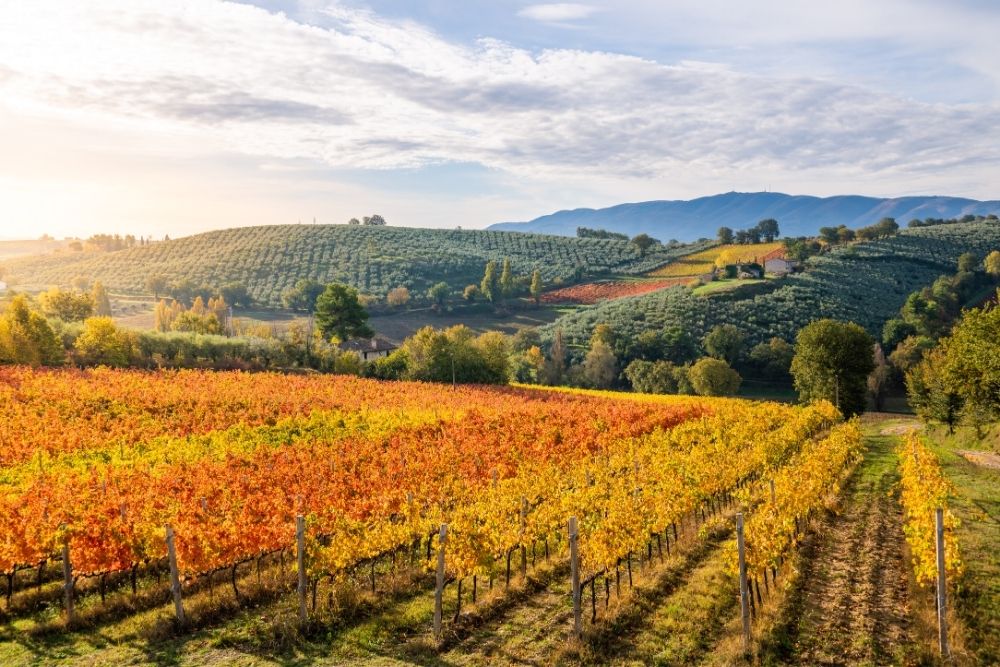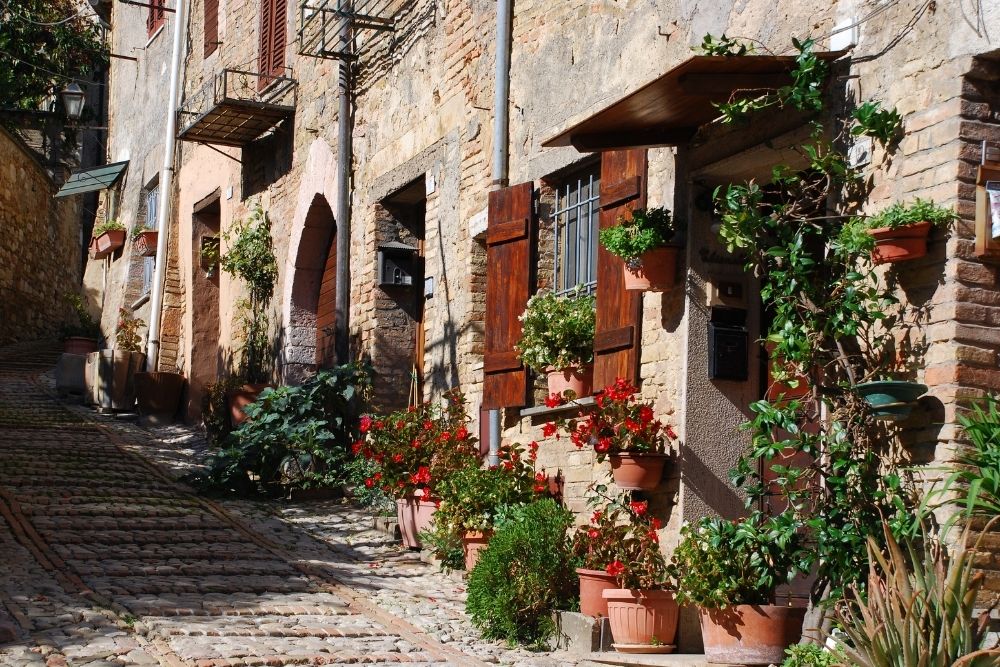
Norcia
Norcia is a small town in the east of the province of Perugia, in the cental region of Umbria. At just over 600 metres above sea level, it lies in the narrow river valley known as the Valnerina, a narrow valley carved by the river Nera and its tributaries. It is surrounded by the wooded slopes of the Sibillini mountains and national park. Surprisingly for a hilltop town in this type of location, it lies on a wide, fairly flat plain.
The town of Norcia and the surrounding area is known for its fresh, clean air and spectacular scenery, making it a base for mountaineering and hiking. In late spring it becomes the backdrop for a particular natural phenomenon called Fioritura.
The Fioritura is mass flowering of dozens of different floral species that give rise to a multicolored carpet covering the whole valley.
The old historic town is totally enclosed by a complete circuit of walls that have survived intact from the 14th century, inspite of the area being prone to frequent earthquakes. These walls have remained standing and intact through many earthquakes, including several of which were devastating, 1763, 1859, 1979 and 1859. After the earthquake on the 22nd August 1859 the area was forbidden, by the Papal States, to build any structure higher than three storeys and they had to abide by stringent building regulations.
However, in 2016, two earthquakes in quick succession caused major damage to the town and surrounding areas. The first, with a magnitude 6.2 on the 24th August, caused some major structural damage. The second, a magnitude 6.5 on the 30th October, hit the centre of Norcia causing many historic buildings, including the Basilica of St. Benedict, to be destroyed.
The Piazza San Benedetto is the heart of the town, its edges lined by the major buildings of interest, many of which, unfortunately, were badly damaged in the earthquakes in 2016. They include:
The Basilica di San Benedetto
The original building had a splendid Gothic faced with a rose window and freizes of the four evangelists. All but this facade, the apse and the transept collapsed.
La Castellina
A fortified residence housing the prefecture and the pontifical governors. It was built in 1554 on a design by Vignola.
Cattedrale di Santa Maria Argentea
This cathedral was built in 1554 on the site of a parish church that had been destroyed to make room for the Castellina. The roof and part of the facade collapsed in 2016.
Other than tourism, due to its natural beauty and excellent hiking and mountaineering landscape, Norcia is also well known for its wild boar hunting. The meat from these wild boar and the local naturally reared pigs is turned into an array of cold meats and salami. One of the most famous products is Prosciutto di Norcia, awarded with the IGP brand in 1998, along with 'Corallina di Norcia', a salami consisting of three parts of pork and one part hard fat. The term 'norcineria' has been created to describe the delicatessen selling all of the meats, sausages and salami produced in this area.







